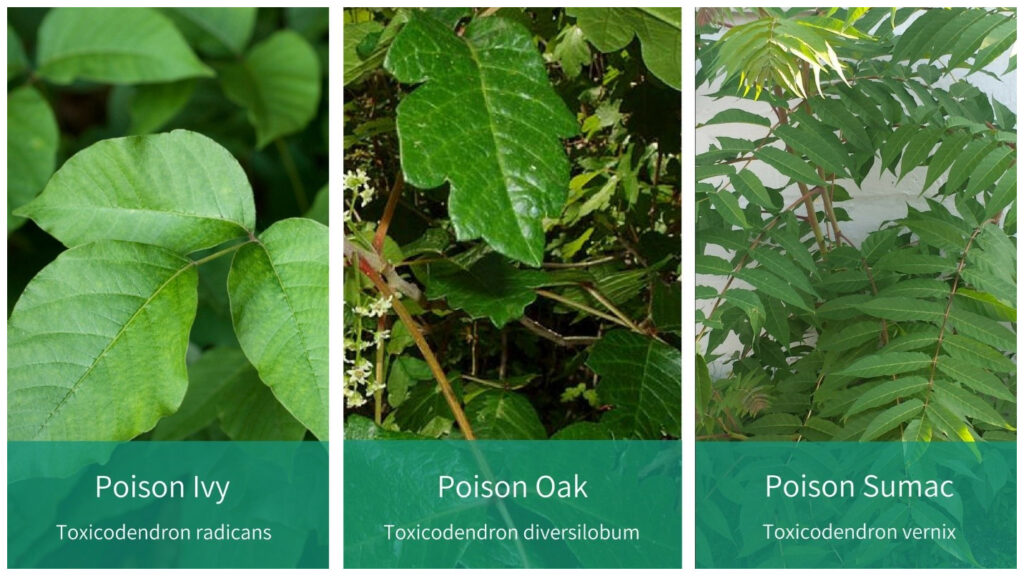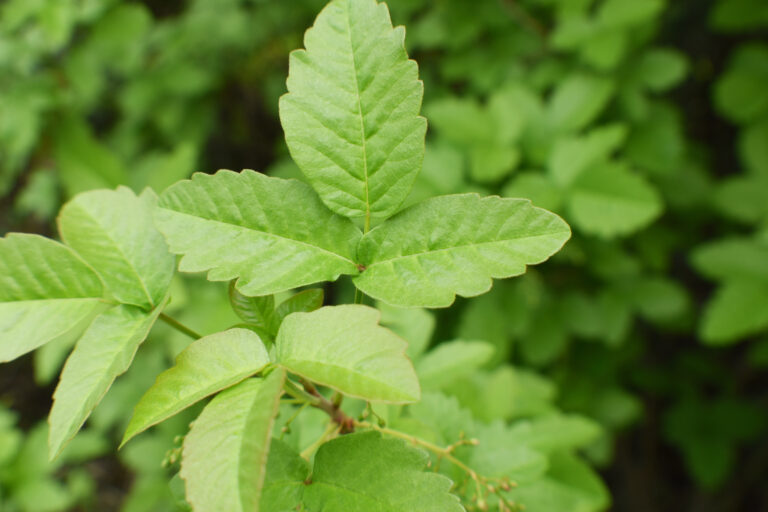Southern California ecosystems range from semiarid to bone dry, and the region’s self-protecting plants range from standoffish to downright nasty. Here are a few dangerous and poisonous SoCal plants to steer clear of.

LEAVES OF THREE, LET THEM BE!
Poison Oak, often referred to as “the most common shrub in California,” is prevalent in the area. It produces a clear oil compound called Usushiol that easily binds to and is absorbed by human skin. Sensitivity to the rash and itching that follows varies from person to person based on a whole host of circumstances.
How to identify Poison Oak
• Poison oak is a low-growing, upright shrub. It can grow to be about 3 feet tall, sometimes giving it the appearance of a vine.
• Leaf shape resembles an oak leaf (hence the name, poison oak), but it’s not a member of the oak family.
• Leaflets are duller green than poison ivy and usually more distinctly lobed or toothed.
• Leaflets have hairs on both sides, unlike poison ivy.
• Poison oak tends to grow at elevations between sea level and 5,000 feet.
• While the fruit of poison ivy is the color of pearls, poison oak fruit (called “drupes”) has a tan color.
How to Treat Poison Oak
• Wash the affected areas with dawn dish soap, lukewarm-cold water within 3-4 hours of contact.
• Place cool, wet compresses on the affected area for 15 to 30 minutes several times a day.
• Soak in a cool-water bath containing an oatmeal-based bath product such as Aveeno.
• Apply an over-the-counter corticosteroid cream for the first few days.
• Apply calamine lotion.
• Take oral antihistamines, such as diphenhydramine (Benadryl, others), which may also help you sleep better so don’t operate a vehicle or heavy equipment.
• Wash any belongings that might have come into contact with the ivy to prevent further outbreaks.
Patriot Safety has Tyvek Suits if you or your crew needs them. We also carry post cleanser wipes if exposed. If you need anything safety related please call Adrian (619)-951-6783 or Todd (619)-772-0402 and we will gladly take care of you.
Poison oak – Poison oak is the most common in California. However, it is hard to tell the difference between the two and most people use the term ivy and oak interchangeably.
Poison ivy – This vine is found on the ground, climbing on trees, fences, and walls, and can also be found in small shrubs. Poison ivy always comes with three leaves and never has thorns or sharp or scalloped edges.
Poison sumac – You may only run into poison sumac if you are traveling south. Poison sumac looks a lot different than poison ivy, as its only form is a small tree. Poison sumac thrives in wetland areas.




